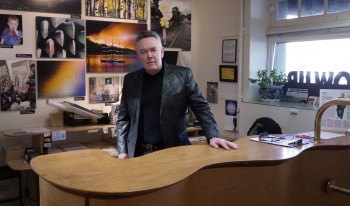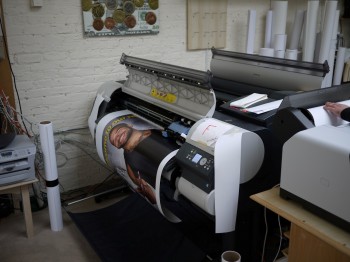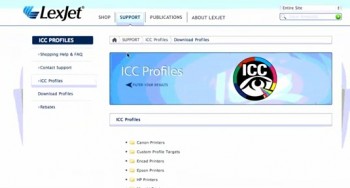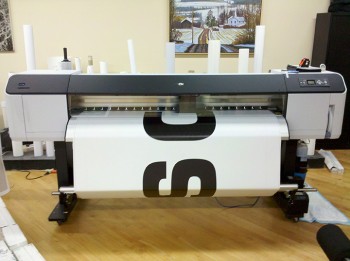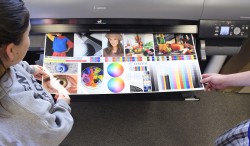 Hewlett-Packard has selected LexJet as an authorized reseller of the 60-inch and 42-inch wide HP Designjet L25500 latex inkjet printers. With the addition of the L25500, LexJet expands its portfolio of inkjet printing technology, fitting perfectly into a range of LexJet printable inkjet media already developed to be compatible with latex inks, including LexJet’s Simple line of vinyl for vehicle, specialty, window, wall and other sign and display applications.
Hewlett-Packard has selected LexJet as an authorized reseller of the 60-inch and 42-inch wide HP Designjet L25500 latex inkjet printers. With the addition of the L25500, LexJet expands its portfolio of inkjet printing technology, fitting perfectly into a range of LexJet printable inkjet media already developed to be compatible with latex inks, including LexJet’s Simple line of vinyl for vehicle, specialty, window, wall and other sign and display applications.
The HP L25500 can print on a wide range of media, papers and textiles, including media optimized for solvent and low-solvent inks. Designed for both indoor and outdoor graphic production, the HP Latex Inks are durable, odorless and emit very low levels of volatile organic compounds (VOCs) so that no special ventilation is required. Moreover, the inks do not require special handling, are non-flammable and non-combustible. The printer uses internal radiant heaters and forced airflow to cure the inks, speeding up turnaround times on printed graphics.
The HP L25500 utilizes six ink colors with print resolutions up to 1,200 dpi, combined with HP Double Swath technology with three pairs of HP 789 Designjet Printheads and the HP Optical Media Advance Sensor for saleable output up to 246 square feet per hour.
The printheads have a simple snap-out, snap-in design for easy replacement. A built-in automatic printhead service station and automatic nozzle testing system, plus large 775 mil ink cartridges, eliminate the need for daily maintenance and ensure long periods of uninterrupted production. Used HP 789 Designjet Printheads and HP 780 Latex Ink Cartridges may be returned and recycled through HP’s free and convenient Planet Partners Program.
For more information about the HP L25500, and to find the right printer for your business and its applications, contact a LexJet customer specialist at 800-453-9538.

